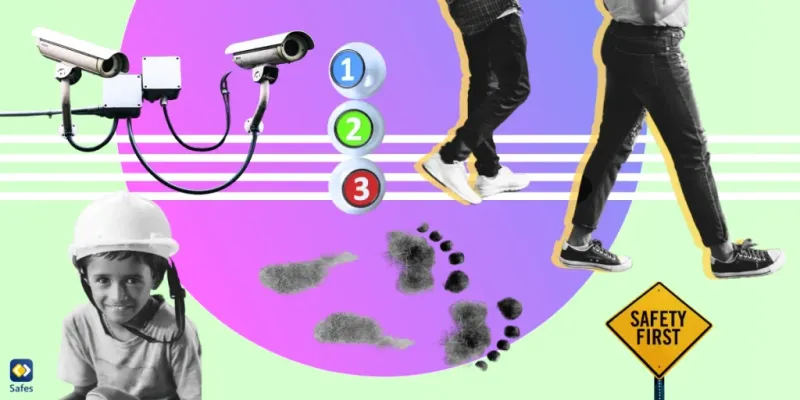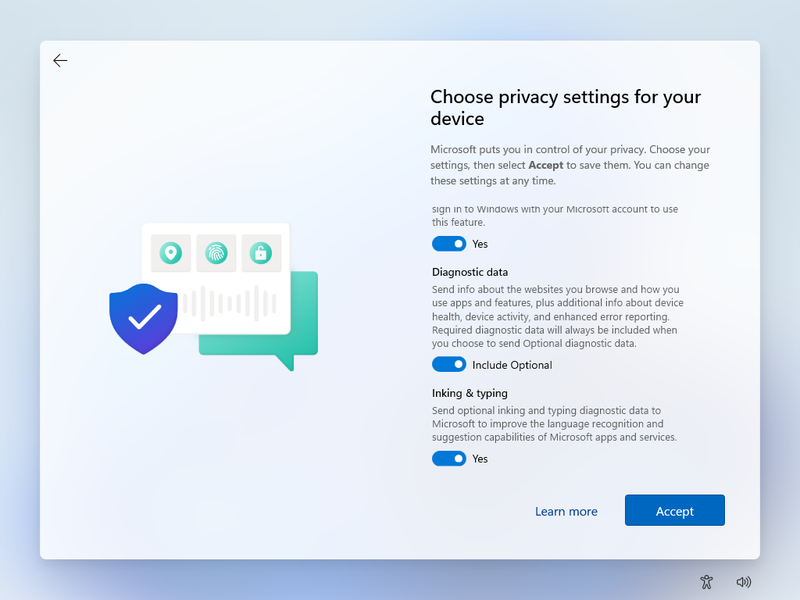In an increasingly connected world, children’s digital footprints are formed long before they fully understand the implications of their online actions. This guide provides parents with 18 practical ways to protect their children’s digital presence.
By taking proactive steps, parents can help their kids navigate the digital landscape safely, ensuring that their online identities are safeguarded from potential risks.
From setting privacy controls to discussing cyberbullying, each section offers actionable insights to foster a secure and responsible online experience for children.
1. Teaching kids what a digital footprint really means
Why does a digital footprint matter? Children today are unknowingly leaving trails online. A simple post or comment can last forever. Educate them early about the impact of their digital actions.
Start by explaining that digital footprints are like a permanent record. Use relatable examples, like how a note passed in class can be shared with others. This helps young minds grasp the concept of longevity.
Engage in conversations about their favorite apps or games. Discuss the information they share and its potential spread. By fostering understanding, children become more mindful, taking care to protect their digital identities.
2. Setting privacy controls on all devices
Privacy settings are the gatekeepers of your child’s online world. By configuring these controls, you decide what information is shared and who can access it. Privacy settings prevent unwanted intrusions.
Begin by setting device-specific controls. Each platform has its own privacy options. Walk through them together, showing how to adjust settings to keep personal information private.
Encourage a routine check-up of these settings. Platforms often update their privacy protocols, and staying informed helps maintain a secure environment. Teaching children this proactive approach empowers them to take charge of their digital safety.
3. Talking about the permanence of online posts
Imagine writing a letter in ink, impossible to erase. Online posts are much the same. Discuss with your teen the permanence of their digital words and images. What they share today might be seen tomorrow.
Use real-life examples of how past posts have impacted reputations. This illustrates the potential consequences of impulsive sharing. Encourage them to think twice before posting, fostering a habit of caution.
Create a dialogue around responsible sharing. Ask questions like, “Would you be comfortable if your grandparents saw this?” Such discussions help them consider the long-term impact of their digital footprint.
4. Encouraging them to think before sharing photos
A picture can tell a thousand tales, but it can also reveal too much. Impress upon your child the importance of considering the implications of sharing images online.
Discuss scenarios where a harmless photo could be misinterpreted. By sharing stories of positive and negative outcomes from real-life experiences, they gain perspective.
Encourage them to ask themselves questions before posting. Who might see this? Would I want strangers to view it? This reflective practice helps them evaluate the potential impact, promoting safer online interactions.
5. Monitoring friend requests and online interactions
Friends online aren’t always what they seem. Guide your child in navigating friend requests and online interactions. Teach them to verify unknown contacts before accepting.
Share stories of “friend” requests gone awry. This helps underline the importance of being cautious. Discuss the value of quality over quantity when it comes to online connections.
Encourage open communication about their online experiences. Assure them it’s safe to share concerns with you, fostering a supportive environment where they feel comfortable discussing any digital dilemmas.
6. Using strong, unique passwords for accounts
A sturdy lock keeps valuables safe. Strong passwords do the same for online accounts. Explain to your child the importance of having unique, complex passwords to protect their digital assets.
Illustrate with examples of how weak passwords can be cracked easily. Show them how to create passwords using a mix of characters, numbers, and symbols for enhanced security.
Emphasize the importance of not reusing passwords across sites. Encourage the use of password managers to keep track of them. This practice helps establish a robust defense against potential breaches.
7. Teaching them how to spot online scams
Think of online scams as wolves in sheep’s clothing. Help your child identify these threats by teaching them to spot common signs of online scams, such as unsolicited offers or requests for personal information.
Use interactive exercises to explore phishing emails or fake websites. This builds their ability to recognize red flags.
Discuss stories of real-life scams and their consequences, providing a tangible understanding of potential risks. By developing critical thinking skills, they’ll be better equipped to navigate the online world safely.
8. Avoiding oversharing about them on your own social media
Parents often share their children’s achievements online. However, oversharing can lead to unintended consequences. Consider the privacy of your child before posting about them on your profiles.
Reflect on the amount of personal information shared in posts. A seemingly harmless photo might disclose location or other sensitive details.
Set a family policy for online sharing that respects everyone’s privacy. Discuss this with your children, showing them the safe way to showcase their lives online. By modeling these habits, you teach them the importance of thoughtful sharing.
9. Explaining the risks of location tagging
Location tagging can reveal more than you intend. Explain to your family the risks associated with tagging locations in posts or social media updates.
Use examples where location tags have led to unwanted attention. This illustrates the real-world impact of seemingly harmless actions.
Discuss alternatives, such as sharing location-based posts after returning home. Encourage privacy by default, ensuring that location services are turned off unless necessary. By understanding these risks, your child learns to navigate social media with caution.
10. Encouraging private vs. public account settings
The choice between a private and public online presence is crucial. Discuss with your child the benefits of keeping accounts private, like enhanced control over who sees their content.
Explain how a private account restricts access and provides an additional layer of security. Share anecdotes of public accounts leading to unexpected issues.
Encourage them to regularly review their account settings. This habit ensures they maintain a secure presence online. By understanding the importance of privacy, children can make informed choices about their digital interactions.
11. Discussing cyberbullying and how to respond
Cyberbullying is a silent menace. Have open conversations with your child about recognizing and responding to online bullying.
Share stories of resilience, where victims stood up against cyberbullies. This empowers children to seek help if they encounter similar situations.
Teach them to document incidents and report them to trusted adults. Encourage empathy and support for others facing cyberbullying. By fostering a compassionate environment, children are more likely to act responsibly and support their peers.
12. Modeling healthy digital habits yourself
Children often imitate their parents. Model healthy digital habits by demonstrating balanced screen time and responsible social media use. Your actions speak louder than words.
Turn off devices during family meals, showing the value of face-to-face interactions. Discuss the importance of real-world connections over digital ones.
Share your approaches to managing screen time and privacy settings. By witnessing your mindful behavior, children learn the significance of balancing online and offline lives. Lead by example to teach digital mindfulness effectively.
13. Encouraging offline hobbies and balance
Hobbies outside of the digital realm nurture creativity and balance. Encourage your child to explore interests away from screens, promoting a well-rounded lifestyle.
Share stories of famous personalities who excelled in various fields by engaging in diverse hobbies. This inspires children to cultivate their talents.
Create a family schedule that includes digital-free time. Activities like sports, arts, or family game nights foster connections and creativity. By balancing digital and offline pursuits, children develop a holistic approach to life.
14. Teaching respect for others’ privacy online
Respecting others’ privacy online is as important as safeguarding your own. Teach children to seek consent before sharing photos or information about others.
Discuss the impact of violating someone’s privacy, using examples of trust broken through thoughtless sharing. This emphasizes the importance of mutual respect.
Encourage them to think about how they’d feel if roles were reversed. By fostering empathy, children become more considerate digital citizens, valuing privacy in every interaction.
15. Helping them understand terms of service agreements
Terms of service agreements are often overlooked, yet they govern digital interactions. Teach your child to recognize key elements of these agreements.
Use simplified examples to explain common clauses and their implications. This builds their ability to make informed decisions.
Discuss how terms of service can affect privacy and data usage. Encourage them to ask questions about anything unclear. By understanding these agreements, children become more empowered users of digital platforms.
16. Setting limits on what apps they can use
The digital world offers countless apps, not all appropriate for children. Establish boundaries by setting limits on the apps your child can access.
Discuss age-appropriate applications and the reasons behind restrictions. This helps them understand the protective intentions behind your choices.
Review app permissions together, ensuring they align with family values. Encourage open dialogue about new apps they wish to explore. By involving them in the decision-making process, children learn to navigate app choices responsibly.
17. Encouraging them to come to you with concerns
An open-door policy fosters trust. Encourage your child to approach you with any digital concerns or questions they might have.
Share anecdotes of times when this approach led to positive outcomes. This reassures them that discussing issues leads to solutions, not judgment.
Create a safe space where they feel heard and supported. By maintaining open lines of communication, children are more likely to address potential problems before they escalate.
18. Regularly reviewing their digital presence together
Navigating the digital landscape is an ongoing process. Regularly review your child’s digital presence together, helping them maintain control over their online identity.
Discuss recent posts or changes in privacy settings. This keeps them engaged in their online safety and aware of their digital footprint.
Share insights on how others have managed their digital reputations. By participating in these reviews, children learn to regard their digital footprint as an integral part of their overall well-being.



















